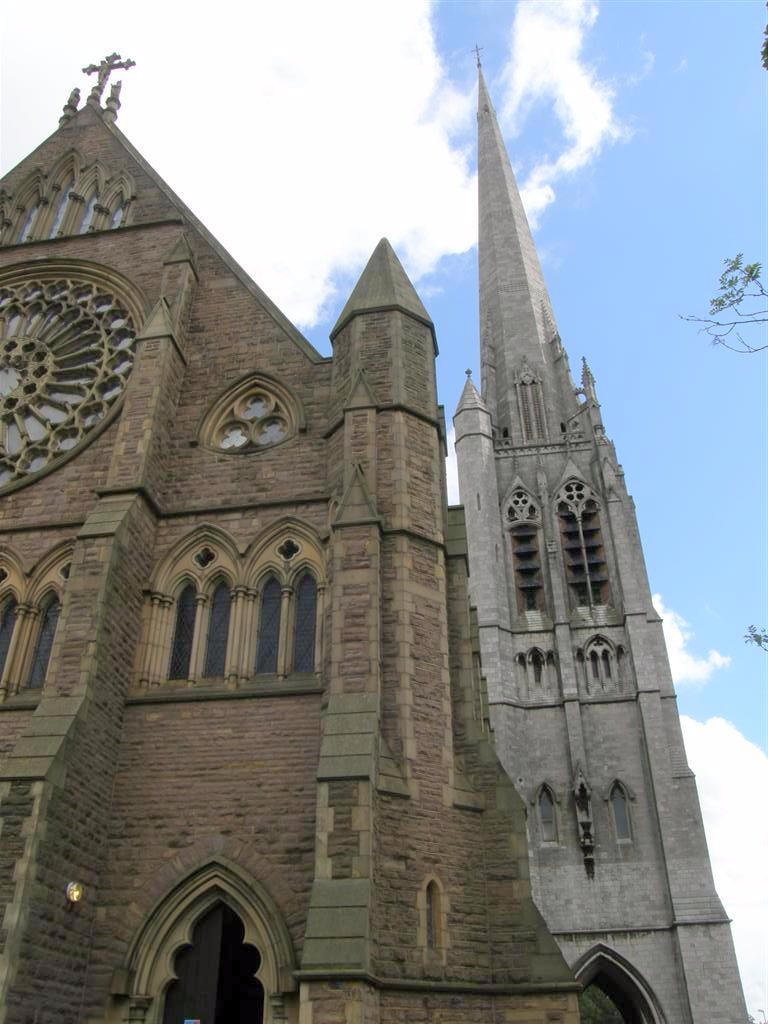
CHRISTIANITY IN PRESTON
The origins of Christianity in Preston are obscured by the mists of time. There was almost certainly Christian worship in the area in the late Roman period (3rd & 4th centuries AD), and many historians believe that the faith survived the departure of the Romans. The place-name Eccleston (found both near Chorley and near Garstang) includes the British word ecles, ‘a church’, implying that there were Celtic Christians in this area in the 5th & 6th centuries – the time of St. Patrick and St. David.
The Anglo-Saxons who occupied Lancashire in the 7th century were already Christian by the time they reached the area (their conversion having begun with St. Augustine’s mission to Kent in 597). They established their own churches and the parish system, the bedrock of local Christian communities, began to emerge. One such was at Preston, a name which itself means ‘priest’s town’ and tells us that this was one of the earliest and most important churches in the region. In about 670 King Ecgfrith of Northumbria granted extensive lands along the Ribble to Wilfrid, Bishop of York, and it is generally agreed that these estates included Ribchester and Preston. In both places the ancient parish church was later dedicated to St. Wilfrid. So, in the second half of the 7th century, Preston was clearly established as a focus of Christian worship. Its parish was large, extending northwards into the Fylde and eastwards towards Ribchester.
During the medieval period the parish community was reinforced by the presence of a Franciscan friary, at the northern end of Friargate, and by the religious hospital of St. Mary Magdalen in the Maudland area (the name of which is a corruption of ‘Magdalen’ ). In the 1530s came the Reformation, the emergence of Protestantism and the break between England and Rome under King Henry VIII. The monasteries, including the friary at Preston, were dissolved and – officially at least – the Church of England became the sole religion. Preston was different. As in much of Lancashire, there was a powerful allegiance to the old Catholic faith, and many townspeople refused to conform to the Church of England, or made only token gestures towards doing so. During the reign of Elizabeth I (1558-1603) Preston was notorious as a bastion of Catholicism, and it remained so during the 17th century.
At the beginning of the 18th century Samuel
Peploe, the vicar of Preston, pleaded with the Bishop of Chester for assistance,
as he was the only Anglican clergyman in his parish, but half a dozen Catholic
priests openly administered to their flock – even though the Catholic faith was
illegal. As a result, new churches were built – St. George’s and Holy Trinity in
Preston and St. Michael’s at Grimsargh. At the same time, the Dissenters –
Protestant nonconformists – began to increase in numbers, and to open chapels.
By the 1770s, when Catholicism was reluctantly tolerated by the authorities, the
fist Catholic chapel was opened in the town: St. Mary’s in Friargate.

Therefore, by 1800 Preston’s religious make-up was more balanced than in almost any other English town. It had a very large and influential Catholic community, a fast-growing Nonconformist sector and, beset on both sides, an Anglican group in the middle.
The town itself was growing very rapidly and in the 1840s experienced a massive influx of Irish migrants. Already an ancient centre of resilient Catholicism, Preston in the 1850s & 1860s became the most Catholic town in the whole of England as a result of this in-migration. The strength and confidence of the Catholic Church is reflected in the soaring magnificence of the spire of St. Walburge’s, one of the finest symbols of Victorian Catholic resurgence anywhere in Britain.
All over the town new churches and chapels were being built: the three rival denominations were united in the view that providing accommodation for worship was a key to keeping their existing flocks and also increasing their numbers. Some, such as St. Augustine’s Roman Catholic Church in Avenham and St. Michael’s Church of England in Ashton, were ambitious and architecturally impressive: costly to build but making a statement. Others were modestly tucked away down side streets. In 1900, though, nobody could fail to be aware that Preston was a town of churches: they, along with the smoking mill chimneys which gave the town its wealth, dominated the skyline.
Now, all has changed: from the 1930s onwards the movement of people out of the inner city has led to the closure of churches and chapels, as declining congregations could no longer maintain costly buildings. More recently, the general decline in churchgoing has exacerbated that problem. New forms of Christian worship have appeared; evangelical congregations seek different venues instead of old-style churches, and though the influx of migrants from countries such as Poland has reinforced the Catholic faith, many problems remain.
Yet Christianity in Preston is now perhaps 1,800 years old, and has a long and exceptionally interesting history. For the first 1,300 years there was one universal Christian faith, then the bitter conflicts of the Reformation broke the Church apart. Today, almost five centuries after that split, there is hope of ecumenicalism and shared purpose – we can be optimistic.
Mac Dunsmore
(Fulwood United Reformed Church)